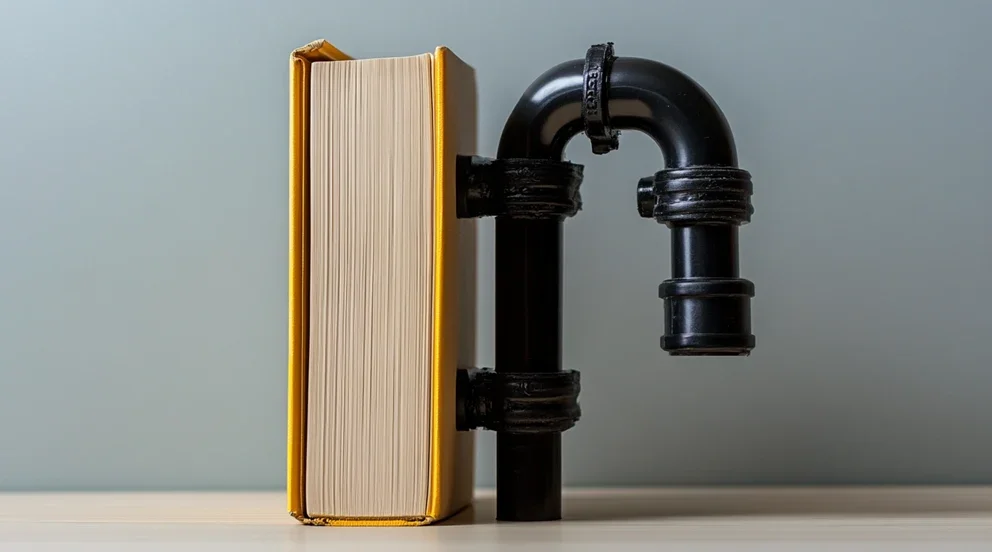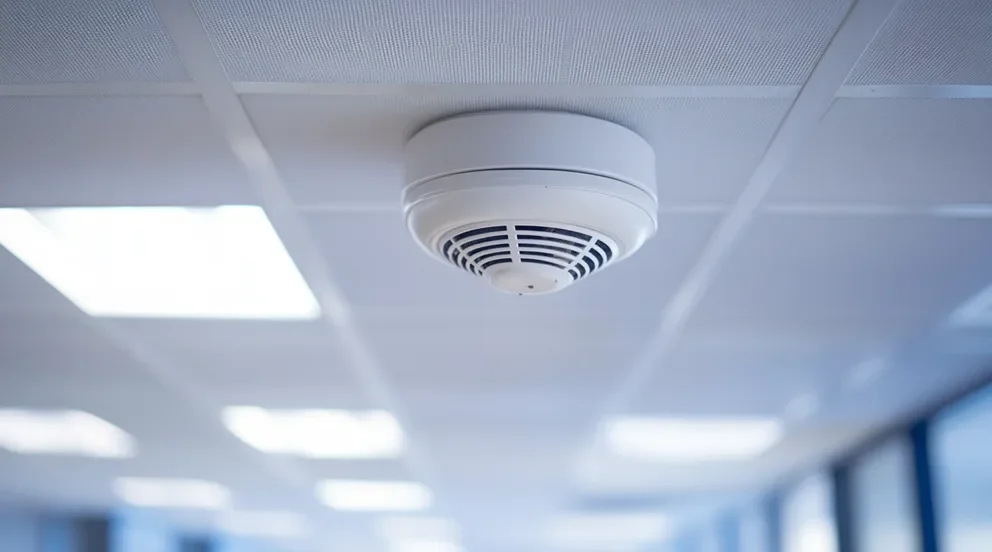Important
While BuildOps does not currently offer a plumbing price book, we’re always looking into new and exciting tools and technology that are moving the industry forward, which is why we’re discussing the subject here.
When your team’s out handling everything from leaky pipes to full repipes, the last thing you need is pricing chaos slowing things down. A solid plumbing price book helps cut the guesswork. It’s your crew’s go-to for quoting quickly, keeping numbers consistent, and making sure no job leaves money on the table.
And while we’ll dig into how a flat rate plumbing price book can simplify service calls, this guide goes further. We’re breaking down all the major pricing systems plumbers use—plus where templates fall short, what to avoid, and how integrated software tools are changing the game. If you work in the plumbing industry, or you’re rethinking how your shop handles pricing, this one’s for you. Here’s what we’ll cover:
- What is a plumbing price book?
- The 3 common plumbing pricing models
- Why plumbing price book templates often fall short
- 5 benefits of integrating a plumbing price book with your operations
- How to boost speed and profits with smarter plumbing estimating and invoicing
Before you start building or updating a system, it helps to get clear on what a plumbing pricing book actually is—and what it’s not. Whether you're eyeing a digital setup, thinking about switching to a flat rate plumbing price book, or still relying on spreadsheets, this next section breaks down how these tools work, what they include, and why they matter on every job. Let’s dig in.
What is a plumbing price book?
A plumbing price book is a detailed catalog of services, tasks, and parts with pre-set costs used by plumbers to quote jobs consistently. It includes labor, materials, and overhead—so techs don’t have to calculate prices on the go. This speeds up quoting and keeps billing accurate across every crew.
The structure and format of a plumbing price book can vary. Some shops stick to static spreadsheets, while others use software with built-in pricing that updates in real time. Whether you're quoting a water heater install or a drain cleaning, a well-organized price book ensures consistency from one tech to the next. Many contractors move toward a flat rate plumbing price book because it simplifies quoting during service calls—especially when time is tight or customers expect fast, upfront answers.
The 3 most common plumbing pricing models
When it comes to quoting plumbing work, there are three core ways contractors price their services. Each model shows up in different types of plumbing price books, and the one you choose can change how your team bids jobs, communicates value, and protects margins.
- Time and materials: This model charges based on actual hours worked plus material costs. It’s detailed and transparent, but if a job drags on or parts run high, totals can balloon—causing tension with the customer and unexpected strain on your bottom line.
- Flat rate: A flat rate plumbing price book sets consistent prices for routine jobs—like faucet replacements or sewer line inspections—using pre-calculated averages for labor, materials, and overhead. It speeds up quoting and keeps things transparent for the customer. If you're considering switching to flat rate, check out our full plumbing flat rate pricing guide for a deeper look at how it works in real-world settings.
- Tiered pricing: This structure, often used in a plumbing service price book, packages work into service tiers—basic, standard, and premium. Each tier includes a set of bundled services or added value (like warranty options), giving homeowners flexibility and upsell opportunities for your team.
Each of these models has its place, but choosing one isn’t the end of the road. The way you build and use your pricing system can make or break how effective it is in the field. And if you’re still relying on a basic spreadsheet or printed template, that’s where problems start stacking up. Let’s get into why that old-school approach often falls short.
Why plumbing price book templates often fall short
A plumbing price book template might seem like a quick fix—something to bring order to quoting and keep pricing consistent. But in practice, those templates often create more work than they solve. Whether you’re using a spreadsheet, a PDF, or a printed binder, they still require techs to hunt down labor times, update part costs manually, and piece together job totals from scratch.
Even digital templates fall short when they’re not integrated into your larger workflow. If pricing isn’t connected to your estimating and invoicing tools, it becomes just another step in the process—slowing down your crew in the field and adding stress to the office when numbers don’t match up. That disconnect leads to missed items, inconsistent quotes, and lost revenue on jobs that should’ve been profitable.
What shops really need is a system—not just a file. The shift away from static plumbing price book templates toward connected, real-time platforms is gaining traction for good reason. Modern plumbing pricing software ties directly into your estimating and invoicing features—so when a tech builds a quote, it’s based on current pricing, and when the job wraps, the invoice builds itself from the same data. No duplicate entry. No mismatched numbers. Just clean handoffs from field to office and faster approvals across the board.
So while templates can be a decent starting point, they rarely scale. If you're still relying on one, the real question is: how much is it costing you in time, trust, and missed revenue?
5 benefits of integrating a plumbing price book with your operations
A basic price book might get the job done, but if it lives on paper or in a static file, you’re likely dealing with delays, double entry, and disconnects between the field and office. A smart, integrated plumbing price book can tighten up every part of the job—from quoting to invoicing—giving your team the structure and speed they need to move confidently. Here’s what it changes:
1. Predictable pricing across your team
When pricing lives inside your system, techs aren’t guessing—or quoting jobs differently from one another. Everyone pulls from the same playbook. That kind of consistency keeps customers confident and helps you spot issues faster. It’s also one reason contractors shift toward using platforms that go beyond the standard plumbing price guide book and actually connect quoting with dispatch and billing.
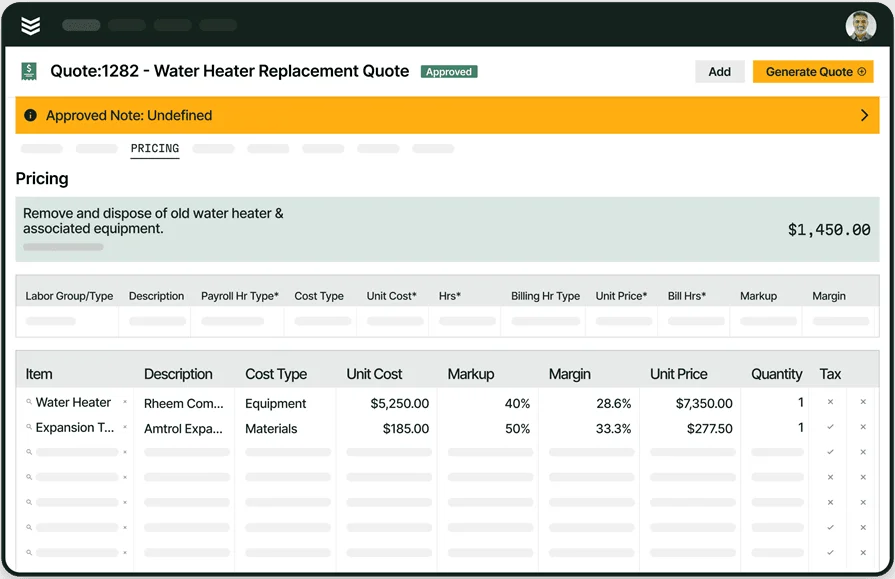
Explore our estimating product
Estimate projects accurately so you can cut cots and increase profitability.
2. Fewer errors on quotes and invoices
Manual pricing entry often leads to duplicate charges, missed parts, or inconsistent labor rates. When you tie your plumbing price book directly into a structured workflow—like what’s shown in this plumbing invoice template—you make it easier to catch issues before they land on a customer’s bill.
3. Faster training for new techs
An integrated price book gives new hires a leg up. Instead of flipping through printed sheets or waiting on dispatch, they can search for the task, view the rate, and quote with confidence. That kind of setup trims down ramp-up time and helps protect your margins while techs are still learning the ropes.
4. Easier upselling and recommendations

When pricing and estimating are tied together, techs can spot upgrade opportunities in real time—like recommending a pressure regulator during a valve replacement. Tools like plumbing flat rate pricing software are designed to make these in-the-moment conversations feel natural, not forced.
5. More trust from your customers
Customers appreciate transparency. When pricing is clear, consistent, and matches what’s on the final invoice, there’s less back-and-forth and fewer disputes. Some systems even help track service history, preferences, and follow-up needs—like those featured in plumbing contractor software built around long-term relationship management.
Deep Dive
If you're curious about how tech impacts growth, this plumbing company growth data lays out just how much operations and revenue are tied together.
How to boost speed and profits with smarter plumbing estimating and invoicing
If pricing, estimating, and invoicing still feel like three separate jobs in your business, you’re not alone. A lot of plumbing contractors are stuck jumping between tools, cleaning up errors, and trying to chase down payments. But when everything’s connected—from the minute a job is quoted to when the invoice gets paid—you don’t just move faster. You make more money and fewer mistakes.
Here’s how the best shops are tightening things up:
1. Keep your pricing up to date
Material costs shift fast—one week it's copper fittings, next week it’s PVC. A disconnected system means your estimates can get stale overnight. With live pricing feeds baked into your quoting tools, your numbers stay accurate without needing constant manual updates. Some shops use a plumbing pricing app to pull this off in real time.
2. Build service bundles, not one-off quotes
Stop reinventing the wheel every time. Package your most common jobs—snaking a drain, replacing a valve, installing a tankless—and turn them into templates your team can use on the fly. It simplifies the process for your plumbers and helps everyone quote the same way.
3. Let estimates build the invoice
When your estimate and invoice are connected, there’s no copy-paste mess. Techs quote the job, the customer signs, and the invoice builds itself. Tools like plumbing invoice software make that handoff automatic so no one’s stuck fixing numbers at the end of the day.
4. Sync pricing with what’s on the truck
Quoting parts that aren’t even in stock? That’s a fast track to wasted time and callbacks. When your plumbing estimating software talks to your inventory, your team can quote what’s actually on hand—and move straight to install without delays. It’s one of the many ways field service management platforms are helping crews stay sharp.
5. Make techs quote right at the job
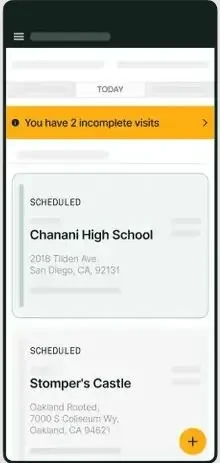
Waiting until the end of the day to price a job? That kills momentum. When your team can quote right there in the driveway or crawlspace, approvals happen faster and customers are more likely to say yes. Field-ready tools like field service management solutions give plumbing contractors that power without needing to call back to the office.
6. Use past quotes to fine-tune future wins
Every estimate is a learning opportunity. Look at which quotes are getting approved, which ones fall flat, and how long they take to close. Tracking this data helps you adjust pricing, train smarter, and focus on jobs that actually convert. Plumbing contractors using CRM tools are already seeing the benefits of tying quote performance to the bigger customer picture.
7. Lock in margins with built-in rules
Ever had a plumber underquote because they forgot to include labor markup? It happens. Set up rules in your system—minimum labor rates, material markups, discount limits—so no one undercharges, even by accident. It’s the kind of safeguard that separates struggling shops from profitable ones.
8. Give your estimates context
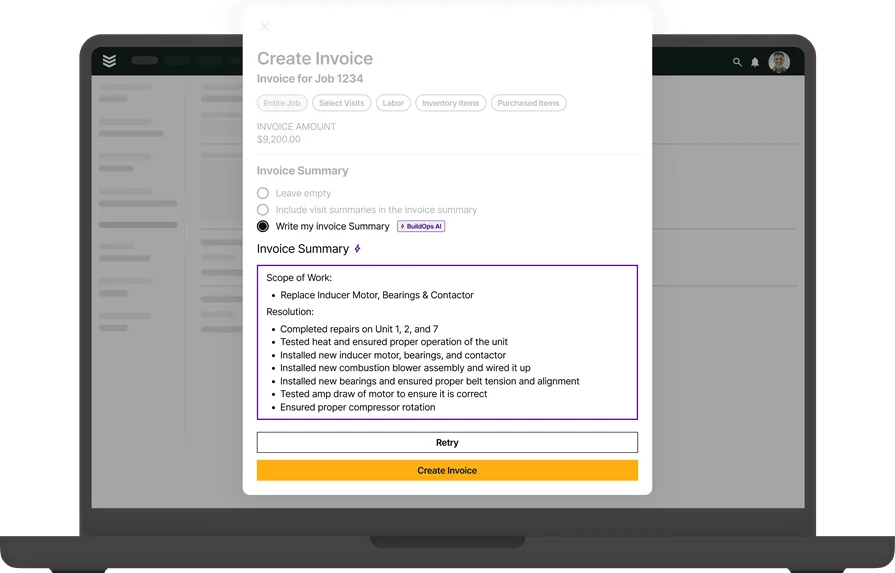
Knowing what’s been done at a property makes quoting a whole lot easier. If your system shows the last time you replaced a shutoff or jetted a line, plumbers can quote smarter and flag recurring issues early. This is where tools built around the benefits of field service management software really pay off—by giving you the full story, not just the price.
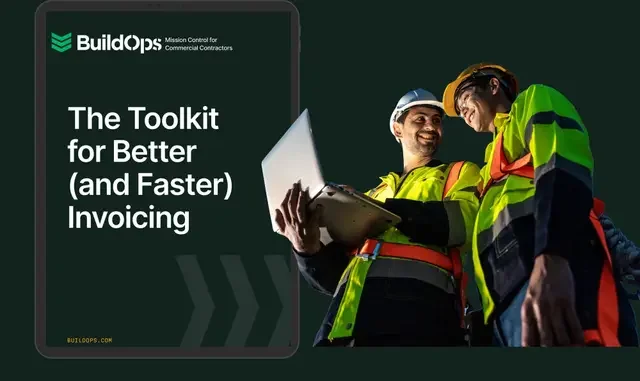
Improve your invoicing process
Don’t just price jobs accurately—bill clients faster so you’re always paid on time.
A plumbing price book isn’t just a tool—it’s a system. One that can help your crew quote faster, bill cleaner, and stay consistent across every call. Whether you’re building a flat rate setup, using tiered packages, or tracking time and materials, the way you structure and deliver pricing plays a huge role in how your business operates day to day.
And as you’ve seen, there’s a big difference between using a static template and having a living system that ties directly into estimating, inventory, and invoicing. For commercial contractors juggling multiple teams, that kind of integration isn’t just helpful—it’s necessary. That’s where platforms like BuildOps come in, bringing everything together so nothing falls through the cracks when the pressure’s on.
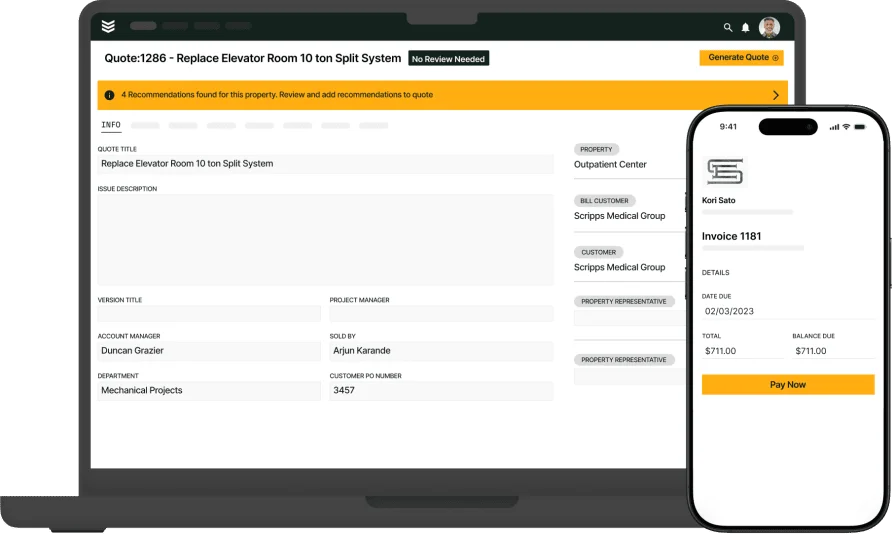
Take a closer look
See how BuildOps helps plumbing teams work faster in the real world.
